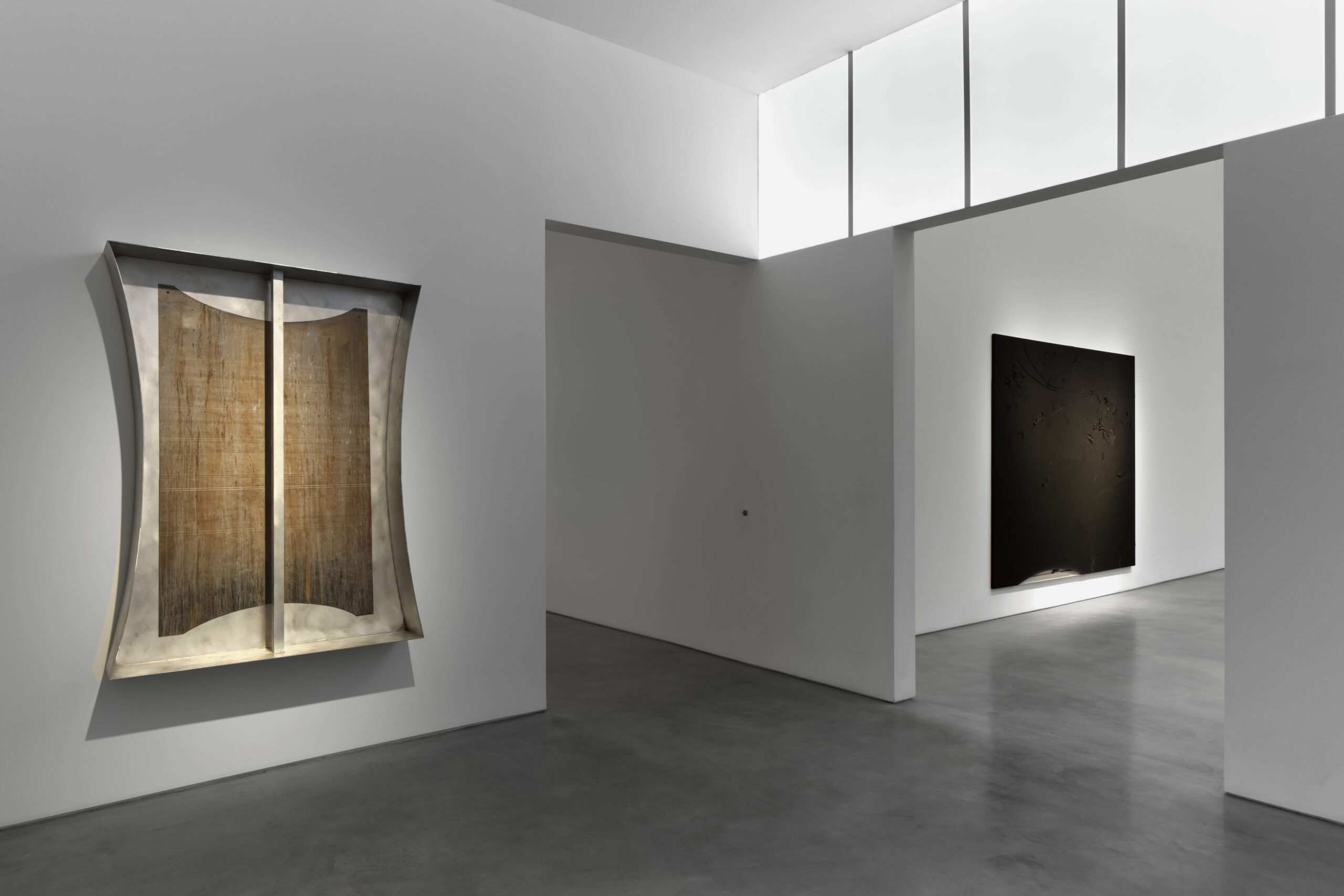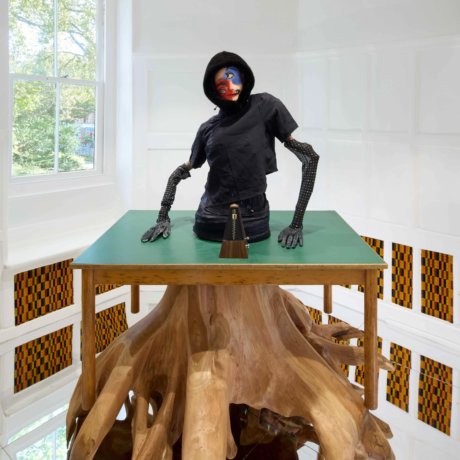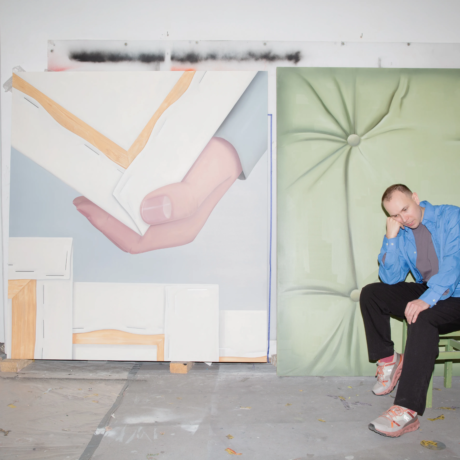
Years ago, I met Reginald Sylvester II through a mutual friend, who brought him to see a Judy Chicago retrospective at the de Young Museum. When I think back on our walkthrough, I remember his cool yet curious demeanour, examining each of Chicago’s works as if his eyes had x-ray vision. We talked about the evolution of Chicago’s practice, the various types of materials and textures in the craftsmanship, and her investigations into history and our role in it–particularly when that historical record lacks inclusion. As he debuts his first exhibition on the West Coast, T-1000, I know that Sylvester takes this form of practice to the next level, observing possibilities and making connections in his artwork that both excite and scare you, especially when you consider their ramifications.
T-1000 opens at Roberts Projects in Los Angeles and is named in reference to the Terminator 2: Judgement Day villain–an artificially intelligent shapeshifter that utilizes different metals to take human form and wreak havoc. What is most interesting is that this intelligent entity travels from the future to essentially stop the emancipation of humans after an AI apocalypse… I know it’s a lot, but as Sylvester and I go on to discuss, it’s not so different from our present-day conflict against the harmful rise of intelligence–especially if you are a Black or brown person constantly under this surveillance.
With materials like rubber, steel, and paint, Sylvester’s new body of work examines the impact of living in an intelligence-driven state and the harm that these forms of oppression have on our current and future lives. You need not fear a moment when cyborgs project themselves from the future when we have our own very real horrors unfolding right before our eyes. From COINTELPRO to scientifically engineered and artificial foods to ChatGPT replicating our language and likeness to Robotaxis that run over pedestrians and block emergency services- all of this is fuelled by a knowledge-hungry society, backed by dollars that cause income inequality and a housing crisis and racial injustice that ultimately keep the oppressors in power and so on and so forth, it’s the kind of deep thinking that inspires you to delete your social media, turn off your cell phone, and escape to the woods while you still have the time. (If only it was that easy, right?) As for Sylvester, he’s in it for the long haul. If all of that doesn’t take us out, if it actually comes down to an asteroid or a zombie outbreak, he’ll be here, making art and continuing the fight for humankind. Will you join him?
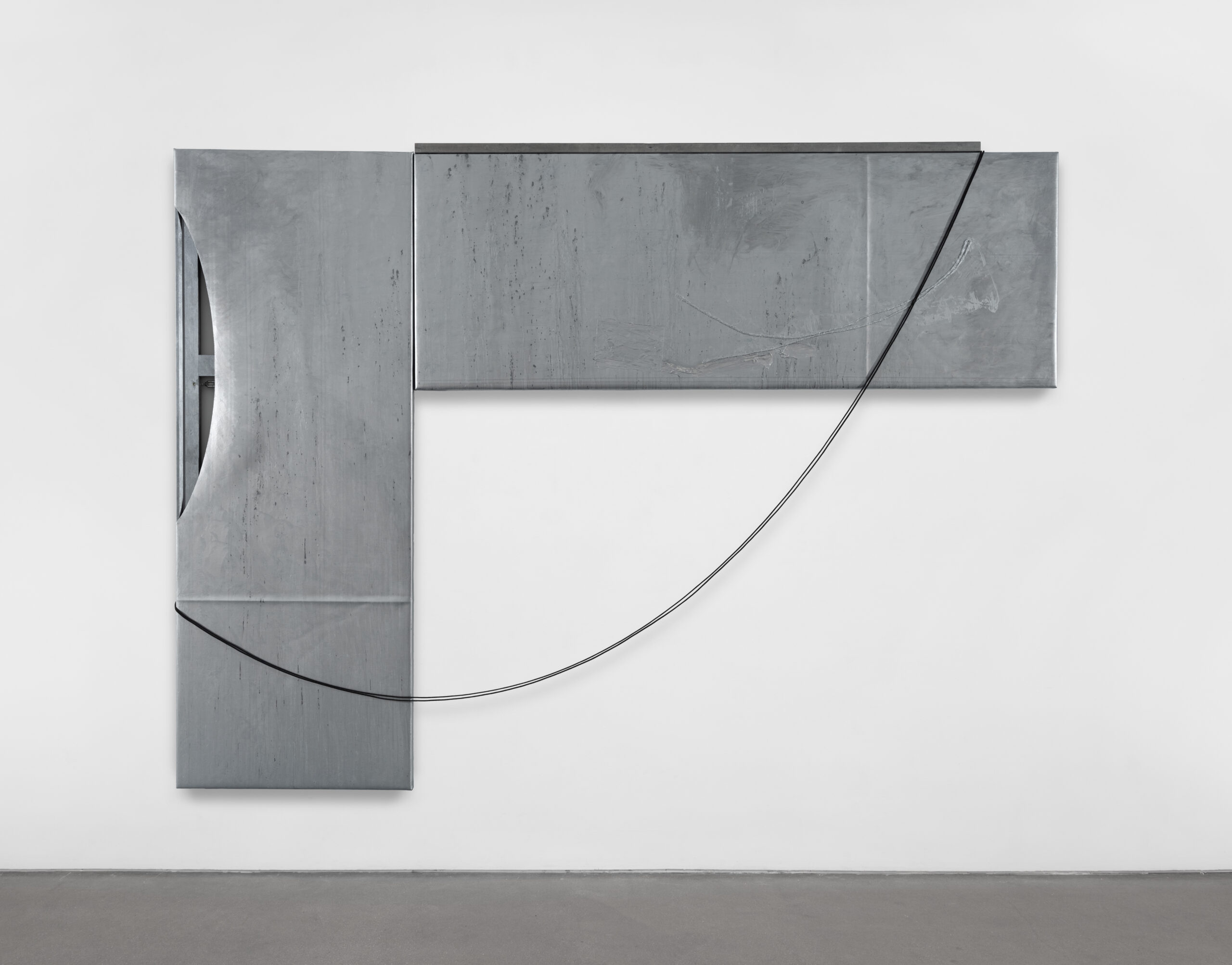
Congratulations! This is your first West Coast show, right?
This is my first West Coast show. It’s been a long time coming for this. It’s funny; outside of my close friends and family who are on this coast, I definitely have a lot of support within the art world. I’ve been waiting for an opportunity to have a show in LA so that they can all come and see a presentation in person. A lot of my shows outside of New York have been abroad or in the middle of America, where it’s not a main city. So this is definitely a homecoming–but at the same time, an opportunity to have a mainstage presentation.
And the materials you’re working with have evolved. I see rubber, metal and aluminium in this show. Can you talk about what is new within your practice?
Well, I had a show in London called With the End in Mind. I wasn’t working with any new materials at that time, but I was basically taking the byproducts from the paintings and putting those back into the work. I am actually taking elements of my environment and putting that back into the work. Once I started thinking about paintings as “readymades”, it opened my mind to new materials–and trying to find materials that didn’t have a context with painting or within the history of painting…or maybe did, but I hadn’t built my own relationship with those materials.
I also started working with rubber, and I’m still getting further in my relationship with it. I had gone on this search to look for outside materials–I was going to all the hardware stores around the studio, and I came across this rubber that existed on a roll like you would buy a canvas. And I think that was the inception of me really working with the material. That, and I didn’t see too many artists working with it within the canon of abstraction. But it’s a real industrial material.
You know what I mean? Working with this material started to make me think about bringing in other industrial materials. Aluminium. Steel. Really working to make the paintings feel industrial. At that point, I started working on my first sculptures, as well. And the forms that I was left with from the byproducts of the paintings basically gave me a way in which to approach forms with steel. So the Gates sculptures that I’m making are the leftover cutouts from the Offering paintings, which exist on rubber.
These last two years, it’s just been me really just playing within the studio. You know, one idea leads to another. I’m trying to push it as far as I can with ideas and concepts because, at the end of the day, I’m still a fan and a lover of painting. But even though I have these conceptual ideas within painting, I don’t want to move too far from a painting being a painting. There’s still paint. You still can hang it on the wall. And I think that’s key for my practice.
Absolutely. And with your upcoming show in particular–you know I had a lot of fun learning about the works in T-1000. There really is a lot going on here. Can you talk to me about how the idea was formulated?
My last show was at the Kemper Museum of Contemporary Art in Kansas City, and I had made a body of work called Green Gates. I’m always working between abstract gestural paintings that exist on canvas and then the Offering paintings that are a little more conceptual and exist on rubber. Before that work even left, the Gate sculptures that I was working on came into the studio. At that point, the work for the show was pretty much done, and I was kind of just doing random stuff. There were a whole bunch of random ideas that I was working on in the studio, but once the Gate sculptures got back, it was the very first time that a work that I made informed me. Usually, I make the work, and I move on. But something that was new in my process of making, right–I’m a very new sculptor–but getting these things from the foundry made everything else that I was exploring irrelevant. It made me put the works from Green Gate back on the wall live with the sculptures, and then it started to make me think about how I can take this oxidation that exists on these steel forms into the paintings. How can I really bring the level of the paintings to where I feel like these sculptures are?
So once the work shipped, I had one Gate left, and I built paintings around that particular sculpture. There was a body of work that existed before T-1000 called Industrial Paintings. And it was basically me looking at my studio floor, this industrial floor, and also looking at the landscapes within my surroundings, and really trying to make gestural paintings based on that. And then I got to a point where I felt I needed to just strip all the color away, go back into this way of monochromatic making, and really use only iridescent paints that reflect the surface nature of steel. So I was really only working with iridescent steel tones, so I really just limited my palette to these four or five tones and started building the paintings from there. It was basically just me having this relationship between looking at what was going on the surface of the Gate forms and really trying to manipulate that.
And then that made me start thinking more. You know, just me driving my car through the neighbourhood of the studio and I’m looking at the back of pickup trucks and moving trucks and seeing the grit and the grime and the dirt. I realized there was a lot of beautiful language going on within the grit of the city… I need to take that and bring it into the studio.
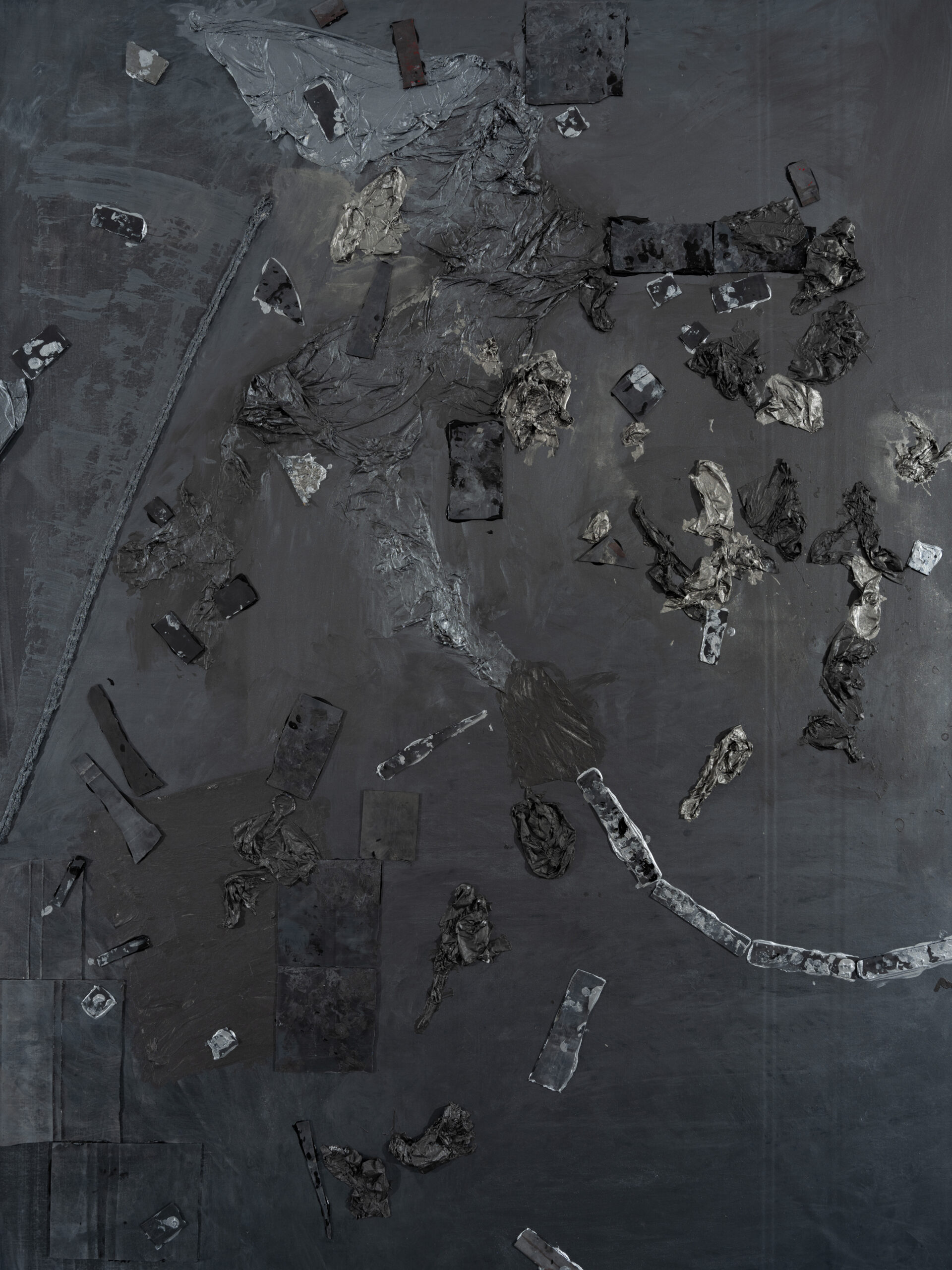

Which brings us to the essence of T-1000…
Yeah! T-1000, you know I’m huge–even with the way that I dress, or the design that I’m into, or the movies I like–I’m huge on post-apocalyptic futurist movies. I love Dune, I love Blade Runner, I love Matrix and Terminator. Then, I read more about Sophia Stewart, who was basically the original author of the Matrix and Terminator stories. She talked about the relationship between the Bible and these movies. And my work has always been rooted in the thought that painting abstraction is a faith-based practice. So, many times, there are these throughlines between biblical references, movies or films or even my own practice, which intrigues me. Stewart spoke about John Connor, who was the saviour in Terminator as this Jesus Christ figure. That’s why his name is John Connor–JC, like Jesus Christ. And I thought, wow, she was tying it all together, and it just made me start thinking about those movies in a different way. These are realizations I’ve kind of had before but never thought about in the sense of using old film as a pop culture reference for the show.
I had thought about the T-1000, how it travelled back in time and was taking all these different forms in order to assassinate John Connor. And I think powers that be take different forms in order to assassinate or put down Black and brown communities or indigenous individuals throughout the world. It’s not a new concept or new idea. But I thought the approach of using Terminator was an interesting through line for the viewer–how I’m using this movie to speak about deeper things through abstraction or through minimalism. Or through these Afrofuturist works that I’m making. I already was in this mindset of making the show, working with these colours through my studio process. Now, I have this kind of reference through the film. You know, the T-1000. This liquid metal character. And I just thought it was a witty way to use that.
I think sometimes we can kind of be overbearing with ideologies or concepts of things… I mean, I don’t believe there’s such a thing as being too front-facing. If you want to talk about something, hit the hammer on the nail. But I thought it’d be a really interesting way to speak about COINTELPRO and the kinds of things that we’ve been seeing over years and years and years, using Terminator as a way to get it across.
I have so many questions! Sophia Stewart… is she a Black woman? I had no idea!
Yeah, she’s an Auntie! So the whole controversy was that she wrote Terminator. She wrote Matrix–I’ve actually been trying to reach out and invite her to the show. But apparently, she wrote a book, and then Warner Brothers took the story and made the films. Once the films came out and got really big and they made all this money, she put a lawsuit out against them. But it’s kinda one of those things where it’s like, is it out there that she wrote these films? No. I just thought it was very interesting that this Black woman wrote these stories–shout out to her. She’s been the precipice and the main inspiration. Like, she’s made these throughlines; how can I bring it a little more to the viewer through visuals? Or tying it in with what I’ve been trying to talk about through my work, which is the Black and Brown experience.
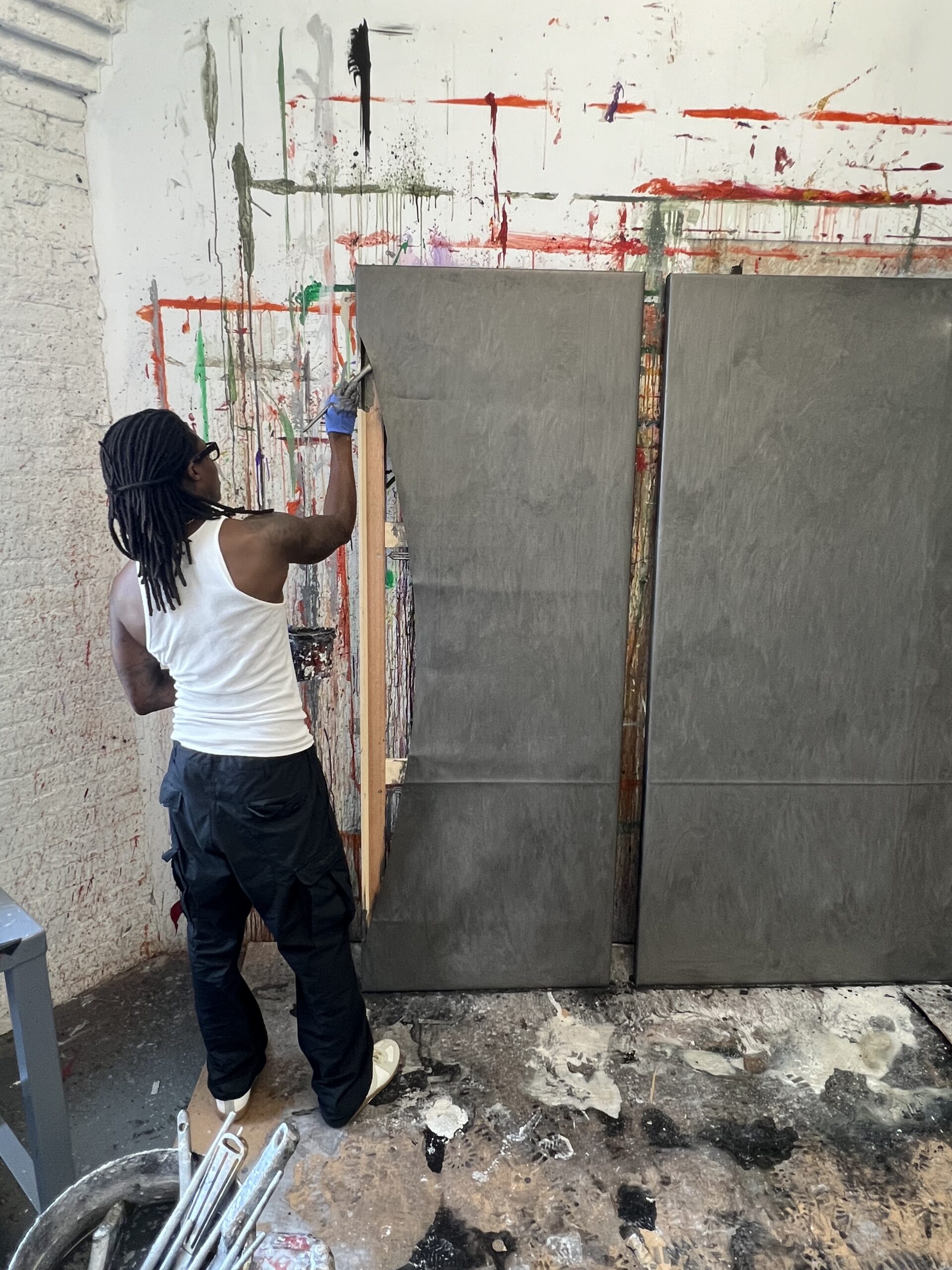
And with that experience, and please correct me if I’m wrong, but knowing that T-1000 is specifically coming back to assassinate John Connor because he leads humans against artificial intelligence. So there’s also this clever warning that you have that gets into the dangers of artificial intelligence.
Yes. Or even more so, the dangers of powers that be. And in my opinion, things are only going to get worse. I don’t just see it as artificial intelligence. The movies over-dramatize–we get taken over by robots or whatever. But artificial intelligence can speak about how we are eating artificial foods, and there’s gonna be a drought in the foods that we eat. Or even the jobs and the working force. Or the powers that be maybe even taking away freedom of speech. There are so many different layers, and I kind of see T-1000 as the oppressive powers that be–whether they be stateside or abroad. Government or religion or whatever. I see T-1000 as being this kind of like this motif for oppression, and this oppressive intelligence will go the extra mile, even if it’s travelling back in time in order to eliminate those who are trying to have a free mind, or free will, or free thought.
Thinking about the show being on the West Coast and you having lived where I am here in The Bay Area, in San Francisco, we’re surrounded by this way of thinking. People who are pushing and experimenting with how far we can take intelligence. Just a few weeks ago, a Cruise Robotaxi ran a woman over and then dragged her across the street. At the same time, with the show being in LA, we can talk about forms like ChatGPTA intelligence that can replace creatives and write our stories. Or even make art.
It’s taking away the whole human experience. I mean, even thinking about just the tech world in general, look how it’s changed our home. Look how it’s changed The Bay. The soul of The Bay, in a lot of ways, it’s not there anymore. Even people that work good jobs can’t even afford to live. It’s all for the pursuit of intelligence. All for the pursuit of AI and technology. And listen, I love my phone more than anybody, ha, but when those things kind of start to choke humanity, that’s when it gets tough. Even just hearing you speak about that opens up a whole new can of worms. Because if you even just look at technology in itself…you know, I think technology should aid us, but it shouldn’t take over.
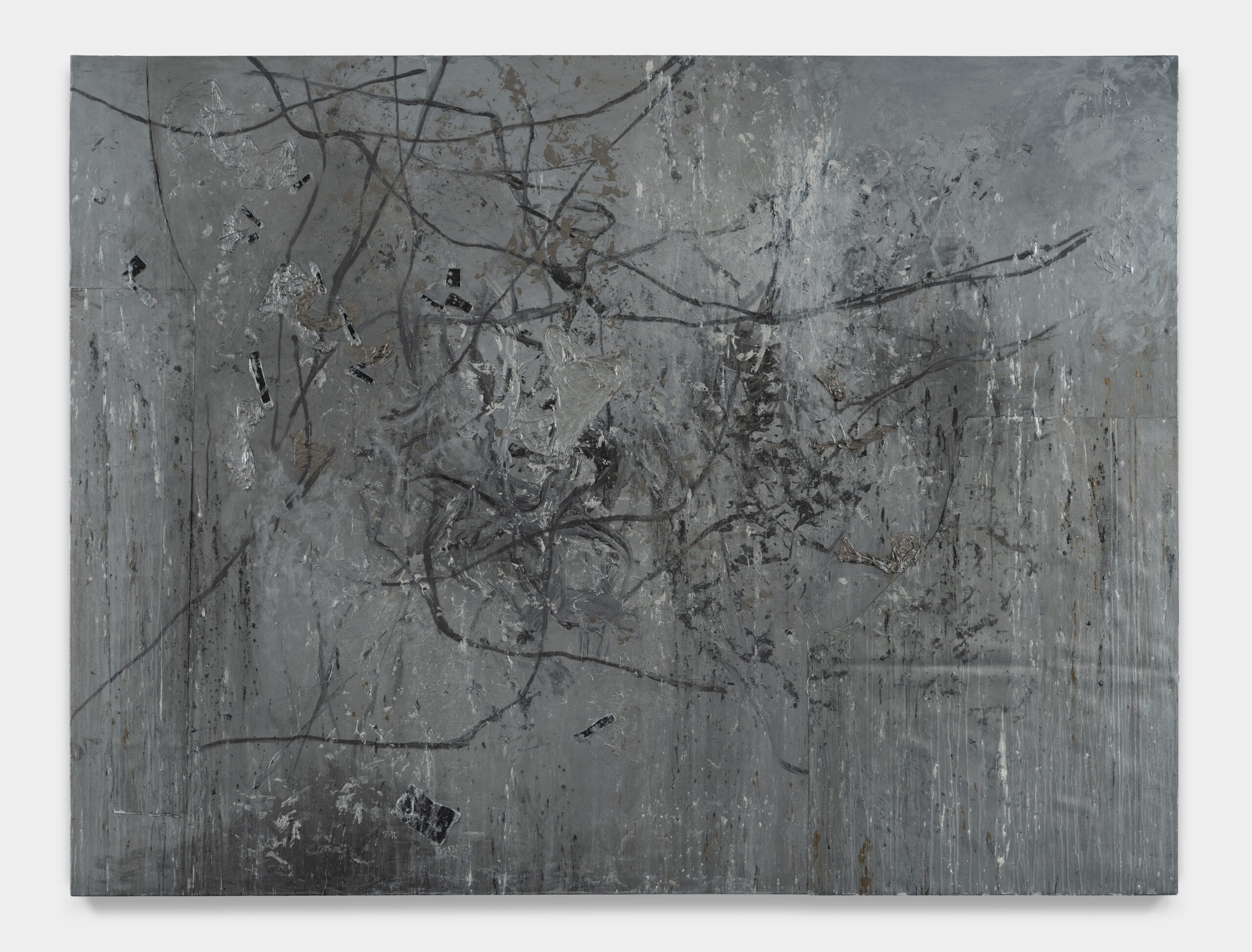
So I have one more question for you. To circle back around, if the apocalypse came, what do you think your role would be within that new world?
Oh, wow! I have two parts to that question. I feel like we’re living in a kind of apocalypse right now. We’re in a post-apocalyptic society. It’s just not a black sky every day, and we’re all wearing futuristic gear. (You know, some fashion brands are already making that.) I feel like we’re already in that place. And it’s my job to prophesy through my work.
And if we’re in the after, after the bombs drop or whatnot, it will be the same job as John Connor’s. It’s like, yo, you gotta fight for mankind. You gotta fight for the human race. You have to fight in order to have some type of longevity and some type of future for our kids. Right? Or for future generations to come. So I think that would be my job. Pre and post-apocalypse, it’s to warn. And it’s to continue the fight hereafter.
Words by Shaquille Heath. Images courtesy the artists and Roberts Projects, Los Angeles.
